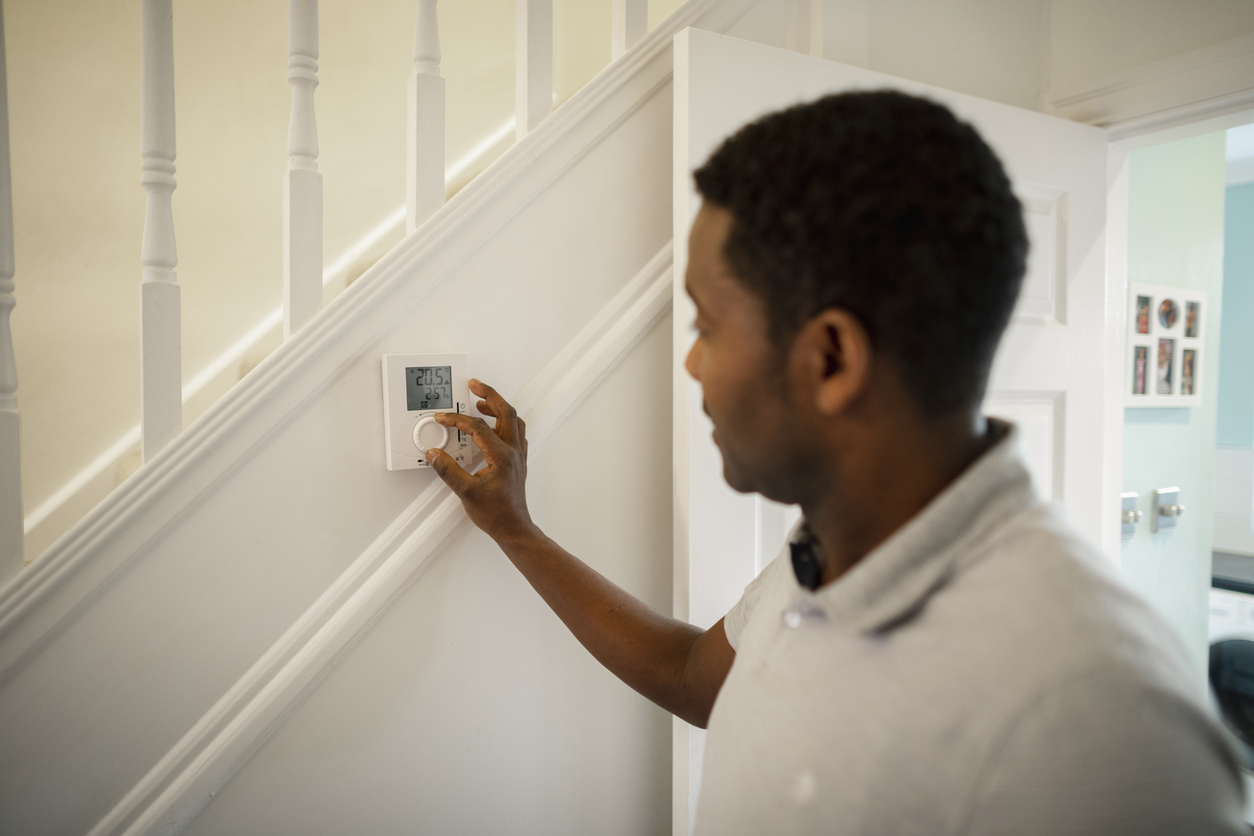Know What Your Customers Want: Homebuilding Trends Growing in 2025
As a home builder, it’s critical to know your audience: not just who they are, but what they are looking for in order to meet their needs. Throughout the last several years, a number of homebuilding trends have shifted in the industry. Younger buyers are stepping up to make those essential purchases, and whether they’re first-time homeowners or they’re moving into a new location, they have different desires and plans than their elders.
As a result, it’s time for you to make a number of shifts in your offerings, your properties, and even the services you market. Take a look at the homebuilding trends that are growing in 2025 and how you can adapt to those changing needs.
Homebuyer Trends in 2025

In 2025, there are a number of key homebuying trends that are changing the way buyers interact with their audience and select the ideal property for their needs.
1. Smaller Properties
Modern homebuyers are looking for much smaller properties. In 2003, buyers wanted an average of 2,260 square feet of finished area. By 2023, that had dropped to around 2,067 square feet. While the average desired home size did increase somewhat around 2021, when buyers were considering the need to work from home and how long they might end up needing to use their property for both work and leisure, it decreased again by 2022.
Homebuyers are looking for smaller homes for a number of reasons. Cost, of course, often makes the list — smaller homes require fewer materials and generally cost less than larger ones. Not only that, but minimalism is in. Many buyers are considering the benefits of a smaller space when it comes to upkeep and organization.
2. Sustainability
Modern buyers are more aware than ever of the importance of sustainability. That means they are looking for several things when it comes to homebuilding trends.
- Materials that can easily be restored, including faster-growing woods
- Homes that are designed with energy efficiency in mind
- Building materials and strategies that will stand the test of time
Sustainability not only means that their home will require less maintenance, which means lower costs over time, but it also means that homebuyers are able to lower their environmental impact — something that is particularly important to younger buyers.
Some buyers may even take a look at your business’s hiring practices and how you treat your employees, because they want to ensure that they are supporting businesses focused on the things that matter most to them. Sustainability isn’t just about the property itself, though that is certainly one key element. It’s about everything that goes into the homebuilding process.
3. Natural Disaster Preparation
The number of natural disasters has gone up significantly over the past several years. For good reason, these risks should impact homebuilding trends. There are more named storms, more heavy damage when storms do hit, and a greater risk of severe damage to property as the storm season rolls through each year. The natural disasters you have to be prepared for may depend heavily on your region. However, ensuring that your properties are prepared for those disasters is among the homebuilding trends modern buyers are interested in. That may include:
- Avoiding the creation of new builds in high-risk areas
- Using durable materials
- Designing the property for the land it’s sitting on, rather than only using standard designs
- Creating effective structural designs
- Using waterproofing and drainage systems that can help reduce the risk of flood damage
- Installing impact-resistant windows and doors
While these strategies cannot fully disaster-proof your builds, they can significantly decrease the possible damage done to those properties if a natural disaster does hit — and that, in turn, can make your buyers more confident in their purchase.
4. Flexible, Functional Spaces
While buyers are looking for smaller homes in general, homebuilding trends also show they want home designs that allow them to make the most of the space. Not only does that mean that they want spaces that can be easily adapted to their needs. Today’s buyers want storage in key areas so that they have plenty of places to keep items not in use.
Many buyers are also looking for home office spaces, flexible living areas, and homes that can be quickly adapted as the family’s needs change. By creating more functional designs, builders can set their properties up for success.
5. Smart Home Technology
Of course, smart home technology continues to dominate in many spaces — and that’s not just about installing a central control hub that makes it easy to turn the lights on and off or play music over the home speakers. Modern homebuyers are looking for convenience in their properties, and smart technology is often key to achieving those goals. That may mean:
- Smart locks
- Home monitoring systems
- Smart home hubs with easy control from personal devices
- Automated temperature control
- Security systems
While buyers are embracing technology, however, it’s key to ensure that technology is a genuine feature, not just something added on to increase the price of the property. Gadgets alone won’t do it. Smart technology needs to be functional and effective, making homeowners’ lives easier.
6. Home Wellness Features
As buyers consider their new homes, they’re often looking for homebuilding trends that will allow them to increase their personal health and wellness options. That may include things like access to walking trails or community amenities like parks, sports fields, or swimming pools, but it also includes personal wellness support in the home. Consider options like home gym spaces and other solutions that allow new buyers to improve their health and wellness from the convenience of home.
Gathering Data About Homebuilding Trends and Adapting Content

Homebuyer preferences and trends have changed dramatically over the past few years, and as homebuilding trends and preferences shift, your business must adapt. Fortunately, there are several strategies you can use to get to know your target market and make sure you are continuing to deliver on their expectations and preferences.
1. Analyze Interactions With Customers
Use your AI chatbots to analyze customer interactions — including both their communications with customers and the interactions your agents have with them. AI can provide a summary of the features that customers are asking for most often, including how those homebuilding trends are shifting and how you can shift your operations to meet them.
In addition to analyzing overall interactions with customers, AI can collect information about specific customer preferences and make sure they are getting the data they need to make key decisions. For example, it may note that a young homebuyer is looking for a smaller property, but is very concerned with storage, and personalize the information sent to them accordingly.
2. Observe Customer Behavior
In addition to tracking direct customer interactions, AI can help observe customer behaviors to get a better idea of homebuilding trends that are on their minds. That may include tracking customers across your site to see how they interact with your brand. It can take into account:
- How long customers spend on specific pages
- What email links customers are most likely to click on
- What content customers are searching for on the website
AI can also analyze how customers may be interacting with other brands.
3. Customize Customer Interactions
You do not just want to observe customer behavior passively. You want to make sure that you are responding to individual customers’ needs and preferences. A couple that is looking for an affordable starter home may have very different preferences than a family that is looking for a home large enough to hold several children — and vice versa.
Your AI chatbots and digital assistants can help collect that vital data and make sure that you are customizing your interactions with customers. This intel ensures the messages, emails, and content they receive align with their interest in homebuilding trends.
4. Adapt Your Messaging
As your AI-powered digital assistant provides you with more information about customer needs, you can adapt your messaging to reflect current trends in your target market. Your target market is unique. It may depend on the type of properties you have to offer, their average cost, and a host of other factors that may influence the way customers interact with your brand. As you get to know them, however, you can adapt the content you’re offering to current industry trends and consumer needs.
If customers are interested in sustainable properties, you can create content that shows how your properties stand the test of time or how you choose your materials. When you know customers are looking for smaller homes, you can blog about how to make the most of storage space or where you can “hide” storage in those smaller properties. With these simple adaptations to your content creation, you can provide more useful content for your potential customers and increase their sense of connection with your brand.
Engage More Homebuyers with Verse
At Verse, we offer a variety of tools and AI-powered solutions to help you keep up with homebuilding trends.
With instant response via SMS, Verse helps you meet homebuyer preferences better, while engaging every single lead. Our AI-powered chatbot, Atlas, is built specifically for homebuilders and engages leads from your website.
Contact us today to learn more about how our solutions can empower your homebuilding business stay on top of today’s key trends.


